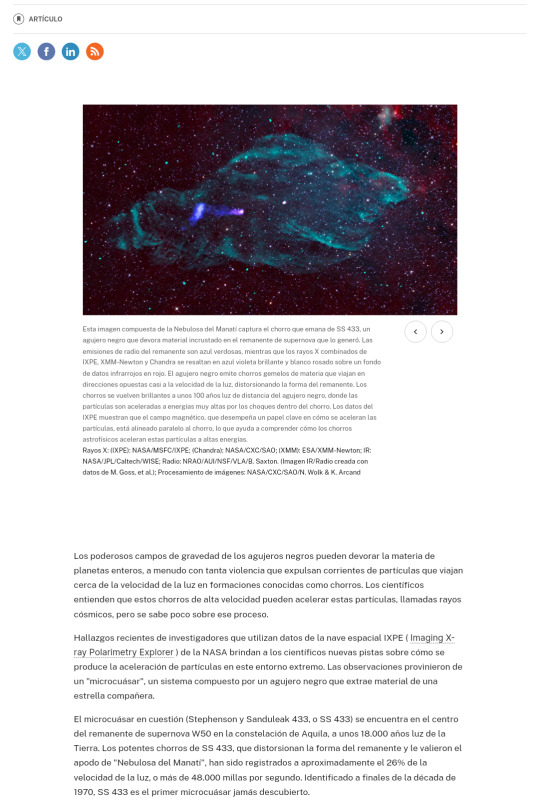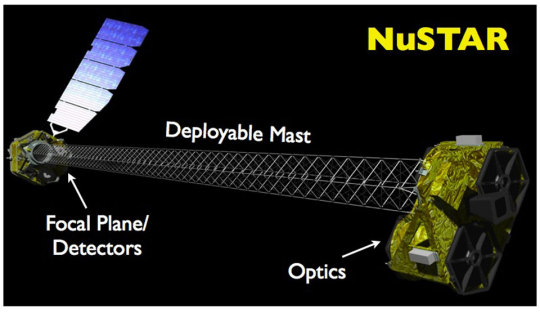#nustar
Explore tagged Tumblr posts
Text
NuSTAR Art + Coloring Pages
Chelsea Gohd Jun 12, 2025 Downloads NuSTAR Coloring Page – Spacecraft (PNG) NuSTAR Coloring Page – Spacecraft (PDF) Downloads NuSTAR Coloring Page – The Sun (PNG) NuSTAR Coloring Page – The Sun (PDF) Downloads NuSTAR Coloring Page – Stellar Remains (PNG) NuSTAR Coloring Page – Stellar Remains (PDF) Downloads NuSTAR Coloring Page – X-ray Binaries (PNG) NuSTAR Coloring Page – X-ray…
0 notes
Text
Mott 32 Cebu Receives Prestigious TripAdvisor Award Ranking Among the Top 10% of Restaurants Worldwide

Mott 32 Cebu, the renowned dining destination at NUSTAR Resort Cebu, has earned global recognition by being named one of the top 10% of restaurants worldwide by TripAdvisor. This prestigious accolade highlights the restaurant’s unwavering commitment to culinary excellence, world-class service, and an unparalleled dining experience that consistently exceeds guest expectations. Mott 32 Cebu has quickly become one of the top destinations for fine dining in Cebu, offering a seamless fusion of traditional Chinese flavors with modern innovation, serving dishes made from the finest ingredients. Guests are welcomed into a bespoke, world-class interior that enhances the dining experience, offering a luxurious atmosphere that perfectly complements the restaurant’s exceptional culinary offerings.

Mott 32 is the one of the most awarded Chinese restaurant brands in the World with locations including Hong Kong, Las Vegas, Vancouver, Singapore, Dubai, Toronto, Bangkok, Seoul and Cebu with Los Angeles, Bali, Riyadh, Manila, Mumbai and Scottsdale in development. Representing modern Hong Kong, Mott 32 embodies Chinese culture and philosophy with modern recipes that have been refined from generation-to-generation, delivering authentic with a modern touch and built on sustainable values. I have dined at two of their global locations including the one inside Marina Bay Sands Singapore and also the branch in Central, Hong Kong. That's why I am also excited to dine at the new branch in NUSTAR Resort Cebu one of these days.

The restaurant's private dining rooms provide an exclusive space to host intimate events, such as family gatherings, celebrations, and corporate meetings. Designed to offer both privacy and elegance, these rooms ensure a memorable setting for guests seeking a refined atmosphere for their special occasions or business functions.

Mott 32 Cebu also boasts a beautifully designed bar and terrace, making it a great place for cocktails and a perfect spot for a night out. The intimate yet sophisticated setting offers guests a range of handcrafted cocktails, allowing them to unwind and enjoy their evening in style. Whether for pre-dinner drinks or a full night of socializing, the bar and terrace provide a chic and inviting ambiance.

The menu at Mott 32 Cebu features a range of signature dishes, including the renowned Apple Wood Roasted Peking Duck, Crispy Soft Shell Crab, and Smoked Black Cod, all carefully crafted to highlight the rich flavors of Cantonese, Szechuan, and Beijing cuisine. The restaurant’s commitment to culinary excellence is further reflected in its array of handcrafted dim sum and other distinctive offerings.

The TripAdvisor award is based on millions of guest reviews and opinions shared globally, underscoring Mott 32 Cebu’s reputation for excellence in both culinary artistry and service. This recognition highlights the restaurant’s status as a world-class destination for food lovers and discerning guests alike. For inquiries and table reservations, contact NUSTAR Restaurant Reservations at (032) 888 8282. Walk-ins are also welcome, based on availability, on a first come, first served basis.
0 notes
Text
Los investigadores utilizaron el instrumento de polarimetría del observatorio espacial IXPE, llamado POLAR, para estudiar la polarización de la luz de rayos X emitida por los chorros del sistema binario SS 433
Los resultados del estudio, publicado en la revista Nature Astronomy, mostraron que la luz de rayos X de los chorros está polarizada en un grado de hasta el 40%. La polarización de la luz de rayos X es una medida de la dirección en la que se vibra la luz. En el caso de los rayos X, la polarización puede proporcionar información sobre la fuente de la luz y el camino que ha recorrido. En el caso…

View On WordPress
#astrofísica#Astronomía#binarios#Centro Marshall#Estudios#Interactuando#Investigaciones#Ixpe#JPL-Caltech#NASA#Nebulosa#Nustar#Observatorio de Rayos Gamma Cherenkov#partículas#Universo#XMM-Newton
1 note
·
View note
Text

The bright flash of a solar flare captured by NASA's Solar Dynamics Observatory.
Dazzling images of the sun
(Image credit: NASA)

Active regions of the sun are shown with X-Ray imaging taken by the NuSTAR telescope.
#nasa#photographer#sun#space#astronomy#science#solar flare#nature#nasa's solar dynamics observatory#nustar telescope#x-ray image
25 notes
·
View notes
Text









NU-STARS: NUSTARS - NU-STARS HOTELS, MOTELS, RESORTS AND CASINOS, RESTAURANTS, BEACHES, RETREAT HOUSES, CEBU CITY, PHILIPPINES. NUSTARS HOTELS, MOTELS, RESORTS AND CASINOS, RESTAURANTS, BEACHES, RETREAT HOUSES, CEBU CITY, PHILIPPINES. NU-STARS HOTELS, MOTELS, RESORTS AND CASINOS, RESTAURANTS, BEACHES, RETREAT HOUSES, CEBU CITY, PHILIPPINES.
#NU-STARS: NUSTARS - NU-STARS HOTELS#MOTELS#RESORTS AND CASINOS#RESTAURANTS#BEACHES#RETREAT HOUSES#CEBU CITY#PHILIPPINES. NUSTARS HOTELS#PHILIPPINES. NU-STARS HOTELS#PHILIPPINES.
0 notes
Text
NuSTAR Coloring Pages
A coloring page for NASA’s NuSTAR mission. Downloads NuSTAR Coloring Page – Spacecraft (PNG) Jun 12, 2025 PNG (187.75 KB) NuSTAR Coloring Page – Spacecraft (PDF) Jun 12, 2025 PDF (485.00 KB) A coloring page for NASA’s NuSTAR mission. Downloads NuSTAR Coloring Page – Nanoflares (PNG) Jun 12, 2025 PNG (171.45 KB) NuSTAR Coloring Page […] from NASA https://ift.tt/VPzAHil
0 notes
Text
🎥 Lights, Camera, Action 🎬: Behind The Scenes | 3D Printed Steel Cube Is Part Of World's First Deep-Sea Art Installation
Made possible by NuStar Technologies in collaboration with the Japan Agency for Marine-Earth Science and Technology (JAMSTEC) and Nanyang Technological University, Singapore (NTU Singapore), the project involved placing steel cubes designed by Singaporean artist Lakshmi Mohanbabu 7,000 metres below sea level.
Click 👉 HERE to checkout Lakshmi’s incredible body of work.
#Lakshmi Mohanbabu Artist#NTU Singapore#JAMSTEC#SG60#NuStar Technologies#Moon Gallery#Ocean Gallery#Hadal Zone#Technology#Art Installation#ArtIndustryNews
0 notes
Link
AMALFI CONDO AT CITY DI MARE READY FOR OCCUPANCY
0 notes
Photo

2025 May 4
Spin up of a Supermassive Black Hole Illustration Credit: Robert Hurt, NASA/JPL-Caltech
Explanation: How fast can a black hole spin? If any object made of regular matter spins too fast -- it breaks apart. But a black hole might not be able to break apart -- and its maximum spin rate is really unknown. Theorists usually model rapidly rotating black holes with the Kerr solution to Einstein's General Theory of Relativity, which predicts several amazing and unusual things. Perhaps its most easily testable prediction, though, is that matter entering a maximally rotating black hole should be last seen orbiting at near the speed of light, as seen from far away. This prediction was tested by NASA's NuSTAR and ESA's XMM satellites by observing the supermassive black hole at the center of spiral galaxy NGC 1365. The near light-speed limit was confirmed by measuring the heating and spectral line broadening of nuclear emissions at the inner edge of the surrounding accretion disk. Pictured here is an artist's illustration depicting an accretion disk of normal matter swirling around a black hole, with a jet emanating from the top. Since matter randomly falling into the black hole should not spin up a black hole this much, the NuSTAR and XMM measurements also validate the existence of the surrounding accretion disk.
∞ Source: apod.nasa.gov/apod/ap250504.html
74 notes
·
View notes
Text

The Sun in X-rays from NuSTAR
Image credit: NASA, NuSTAR, SDO
#photography#astronomy#astrophotography#science#astrophysics#space#aesthetic#photographers on tumblr#nasa#sky#stars#solar system
80 notes
·
View notes
Text
NASA Study Helps Explain Limit-Breaking Ultraluminous X-ray Sources
Estudio de la NASA ayuda a explicar las fuentes de rayos X ultraluminosas que superan los límites En esta ilustración de una fuente de rayos X ultraluminosa, dos ríos de gas caliente son arrastrados hacia la superficie de una estrella de neutrones Estos objetos son más de 100 veces más brillantes de lo que deberían ser. Créditos: NASA/JPL-Caltech Los fuertes campos magnéticos, que se…

View On WordPress
1 note
·
View note
Photo

NuSTAR X-Ray Telescope Launched
Credits: Fiona Harrison, et al., Caltech, NASA
22 notes
·
View notes
Text

New telescope images uncover 'Green Monster' in Cassiopeia A
Using NASA's James Webb Space Telescope, astronomers uncovered a mysterious feature within the remnant, nicknamed the "Green Monster," alongside a puzzling network of ejecta filaments forming a web of oxygen-rich material. When combined with X-rays from NASA's Chandra X-ray Observatory, the data helped astronomers shed light on the origin of the Green Monster and revealed new insights into the explosion that created Cas A about 340 years ago, from Earth's perspective.
Like with the Cygnus Loop, Chandra has provided a 3-dimensional (3D) printable model that can be used to explore the end stage of a star's life. These 3D models are based on state-of-the-art theoretical models, computational algorithms, and observations from space-based telescopes like Chandra that give us accurate pictures of these cosmic objects and how they evolve over time.
IMAGE: Cassiopeia A (Cas A) is a supernova remnant located about 11,000 light-years from Earth in the constellation Cassiopeia. It spans approximately 10 light-years. Credit: X-ray: NASA/CXC/SAO, NASA/JPL/Caltech/NuStar; Optical: NASA/STScI/HST; IR: NASA/STScI/JWST, NASA/JPL/CalTech/SST; Image Processing: NASA/CXC/SAO/J. Schmidt, N. Wolk, and K. Arcand
11 notes
·
View notes
Text
Omg I know I’ve been gone for a LOONG time and I’m sorry I’ve been busy working on my mental health don’t worry I am back and I have questions for you guys!
@luviemakii @luvleyrua @lovelyjuju @lovetaroandtaemin @luneengene2 @lunicho @luvyeni @nishiimuranights @nicholasluvbot @lynaka @lakoya @yoongischopsticks @callmemonster68 @slut4hee @gunilsno1 @m1ssluvyoobot @i7xdorea @minchanfilm @ponyojujuu @hyukabean @jias-entopia @urauntiefaye @addilynli @lowreselle @p1hsworld @makissecretgirlfriend @jujus-gf @serapharua @mochiwonz @visual-freak @ssongsboo @yumengnyangnyang @hazelira @flowerlovecharmer @talkingsaxy @flashbacksofu @valsmar @kamalsoneandonly @anna-357j @aerohmantics @tropimora @novody @cutehoons02 @medea-777 @nustars @rwsyooiii @windypanda29 @takoyakiriki @kelpigee @heesuncore sorry I couldn’t tag anymore people
© tako-takiiii 2025
#&team#andteam#luné#&team fluff#&team smut#&team smau#nakakita yuma#takayama riki#wang yixiang#&team nicholas
10 notes
·
View notes
Text

Croatian militiawoman, Nustar, 1991.
16 notes
·
View notes
Text

"Hand of God"
Can you see the shape of a hand in this new X-ray image?
The hand might look like an X-ray from the doctor's office, but it is actually a cloud of material ejected from a star that exploded.
NASA's Nuclear Spectroscopic Telescope Array, or NuSTAR, has imaged the structure in high-energy X-rays for the first time, shown in blue.
Image credit: NASA/JPL-Caltech/McGill
#art#cosmos#cosmic#universe#blast#space#photography#god#hand#x-ray#nasa#cloud#NST#NuSATR#hight energy#pulsar#nebula#chandra#JPL-caltech#McGill
89 notes
·
View notes